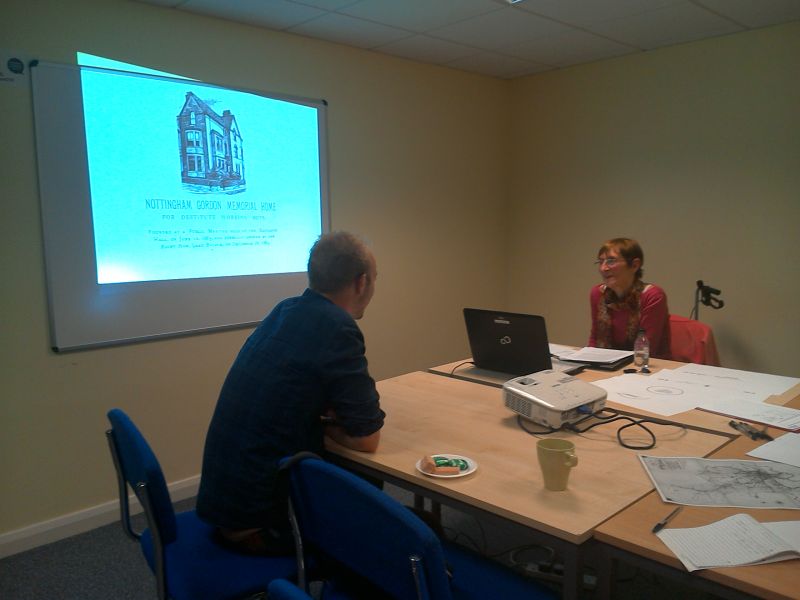Wednesday 27 May 2015
This blog was written by Liz, one of our Heritage Volunteers
Our session today was led by Christine, a member of the group and amateur local historian, who is an absolute mine of information. She covered charity, mutual aid and self- help available to poor people.
Of course the welfare state was an idea that came later, but genuine compassion, a fear of poor people and the idea of being seen to be giving, motivated people to care, by giving money or time. I think all the group were surprised to learn that after food, charity was the largest portion of household expenditure in some classes. Voluntary giving helped community cohesion.
Christine focused on the example of the Nottingham Gordon Memorial Home for Destitute Boys, founded in 1885 - its last location being on Cranmer Street in St Ann’s (although the charity behind the home, Nottingham Gordon Memorial Trust for Boys and Girls, still helps young people in Nottingham today).
It aimed to rescue boys between 11 and 15 years old who were at risk; running wild, arrested, dressed in rags or undernourished. They were given a home, a moral code and some training, working as paid porters in the market perhaps. 1/12 of their meagre earnings were banked, so on leaving the home this was paid to them and a situation found for them.
The boys were required to wear a uniform, a little like a hotel bell boy and one of our volunteers, Pat, has memories of seeing the 'Gordon boys' around Nottingham – she’s not that old; the home was run by the charity until 1948!
There are 20 boys named in the 1891 census and some of the group were interested in trying to trace them and see what became of them.

Other sources of help under the title 'mutual aid' included Trade Unions, Friendly Societies, Housing Societies and the Co-operative Movement.
Christine gave us a short introduction to the development of the trade union movement from 1799 - when even two or three workers gathered together could be deemed a 'conspiracy' - through to the food riots of around 1828/30. At the time, 2,000 people were arrested, 505 of whom were transported, as were the Tolpuddle Martyrs in 1834.
1888 saw the first strike by women workers at the Bryant and May match factory, and by 1896 most skilled workers belonged to a union.
In Nottingham, large numbers of people were employed in hosiery and lace making; troops were called up to quell protests by the framework knitters in the 1770s and Circular Framework Knitters went on strike in 1857 because their rates of pay varied from week to week. Sounds like our 'zero hours contracts'!
Lace makers in the 130 large factories and 90 small workshops also went on strike to reduce their working day to 12 hours. But trade unions also offered pay in sickness, for disability and strike pay for those facing adversity.
You can find out more about the Gordon Boys' Home here.